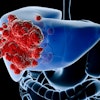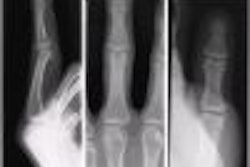In less than a decade, the U.S. Bureau of Labor Statistics predicts that 75,000 additional radiologic technologists will be required to cover the healthcare imaging needs of the nation’s population. Today, there are more than 220,000 registered RTs in the U.S., a number that’s not nearly large enough to fill the available positions.
In a talk at the 2002 American Healthcare Radiology Administrators conference in New Orleans, Lynn May, CEO of the American Society of Radiologic Technologists (ASRT), predicted that "it’s going to be brutal to find people" to bolster the imaging workforce.
The creation of additional career options in radiology is one solution to the shortage. These specialized positions would serve as patient-care extenders, shouldering some of the responsibilities currently held by RTs and radiologists. Radiology practitioner assistants (RPA), radiology assistants (RA), and radiologic technology aides (RTA) are the proposed bridge jobs. RPAs have been in circulation since 1996, while RA and RTAs are new professions currently under development by the ASRT and the American College of Radiology.
Even for those who are veterans of radiology, the similarity between these new roles in name alone can be confusing. AuntMinnie.com offers a breakdown of these extender positions that are being touted as the saving grace of the radiology workforce crisis.
Radiology practitioner assistant
A radiology practitioner assistant is certified to provide primary radiology healthcare under the supervision of a physician as part of a healthcare team. The RPA has autonomy in making decisions about patient assessment, patient management, and radiology diagnostic services. For example, an RPA can be called upon to do an x-ray exam in the emergency department if the on-call RT is busy or unavailable. The estimated salary of an RPA currently ranges between $60,000-$105,000 annually. The rate of pay varies according to the state and responsibilities of the RPA in the radiology group.
Job scope
- Perform fluoroscopy, ultrasound exams, and arthrograms.
- Evaluate and review patient images and reports with staff radiologists before the supervising radiologist reviews.
- Participate in patient management.
- Administer and/or order intravenous medications and contrast media.
Education and certification
An RPA must graduate from an educational program recognized by the Certification Board for Radiology Practitioner Assistants (CBRPA). Weber State University in Ogden, UT, is currently the only institution that offers an RPA curriculum as a graduate-level course.
The first RPA class in 1996 had 10 people; this year enrollment was up to 59, according to John Larsen, president of the National Society of Radiology Practitioner Assistants. "An RPA can increase efficiency (in a radiology department) by 20%. That is a lot of increase in care and hospital revenue," Larsen said during a presentation at this year’s AHRA meeting.
The Weber program covers advanced pathophysiology, fluoroscopic procedures, image evaluation, clinical pathways, patient education and advocacy, patient care and assessment, patient management, and radiobiology, as well as medical ethics, law, and U.S. federal regulations. The professional curriculum content is geared toward the various imaging specialties. The job also requires certification in Advanced Cardiac Life Support (ACLS) skills.
An RPA must be registered with the American Registry of Radiologic Technologists (ARRT). RPA must fulfill continuing education credits every 2 years.
Radiologist assistant
A radiologist assistant is an advanced RT. In the same way that a physician’s assistant helps a physician, but does not replace the physician, the RA will assist a radiologist. The salary of an RA is expected to be comparable to that of an RPA.
Job scope
- Handle patient management, assessment, and care, including taking patient history.
- Perform radiology procedures, adapting protocols when necessary, such as for quality control.
- Evaluate image quality.
- Serve as a patient advocate to improve communication between healthcare professionals and patients.
Education and certification
Although the proposed role of a RA is similar to an RPA, the educational requirements will be different. The educational and certification programs for an RA are currently being developed, but some elements have been decided on.
As a physician extender, an RA will act in a supplementary role. An RA will have a higher level of accountability and responsibility than an RT, according to Ceela McElveny, spokeswoman for the ASRT. The primary difference between an RT and an RA is that the RA will make initial image observations and communicate them to the supervising radiologist, she added.
An RA program will be a four-year academic baccalaureate. The curriculum will consist of three main areas:
- Patient assessment, management, and education, including pharmacology, radiation safety, radiobiology, and health physics.
- Imaging and therapeutic procedures will require mentored clinical experience.
- Image evaluation courses will focus on pathophysiology, image pattern recognition, clinical pathways, and clinical reporting and auditing.
A clinical preceptorship follows the four-year baccalaureate degree, during which the student acquires hands-on skills for exams and procedures under the supervision of a radiologist.
The ASRT is still working on the idea of having a standardized national exam for RA certification.
In an effort to encourage the establishment of RA programs, the ASRT will administer $25,000 grants to four schools. The goal is to begin program development in the next 18-24 months and begin accepting applications in 2004.
The RA is an advanced career level for an RT who wishes to obtain additional education and remain in the clinical environment. The RA will not replace the RT, and only registered RTs can become RAs.
"Although the ASRT cannot predict the salary of an RA job because there are no RAs working anywhere in the U.S., it is safe to assume that an employer will pay an RA more than an RT because an RA will have additional responsibilities," McElveny said in an email to AuntMinnie.com.
Radiologic technologist aide
An RTA’s job could be considered the most wide-ranging, from transporting patients to developing film. The goal of an RTA is to maintain workflow and reduce the responsibilities of an RT that are not specifically related to imaging. The RTA position can eliminate some of the physical stress of an RT job, and prevent overloading. For instance, if an RT has an exam that runs overlong and is in danger of losing break time as a result, the RTA would come in and finish up with the patient.
The ASRT is currently surveying the current status of current practices in the field. The ASRT expects to obtain the results of the survey by February 2003, and then develop a scope of practice and curriculum guide by June 2003. The ASRT also hopes to gather information about the salary range of an RTA.
Job scope
- Process patient paperwork.
- Scan patient information into PACS.
- Escort patients to dressing rooms and instruct on how to prepare for exams.
- Transfer patients.
- Develop films for technologists.
- An RTA will not take patient history.
- An RTA will not select technical factors or evaluate films for technical quality.
Education and certification
Most RTAs will receive on-the-job training. While the ASRT plans to develop a curriculum guide by June 2003, Banner Health System in Mesa, AZ, has created a program to train certified technical assistants (CTAs) for medical imaging departments. In Banner’s program, students complete two full days of classroom instruction for a specific imaging field, such as CT, ultrasound, or radiology. Students then complete 176 hours of on-the-job training and a lengthy "skills list" under the supervision of a mentor.
The skills required of a CTA depend on the imaging specialty. For example, a CTA training in sonography needs to know about sterile trays, while a CTA training for MRI must be well-versed in magnet safety. Once training is completed, a student must pass a written exam with a grade of 75% or higher.
Since the beginning of 2002, 21 people have graduated from two classes of the pilot Banner CTA training program. Janet Menke, creator of the program, reported that the combination of CTAs and RTs has resulted in improved turnaround time for imaging procedures. In addition, the facility has seen an increase in customer satisfaction among patients and physicians, she said.
"More importantly, the CTA is helping the work-stressed RT and is a staff retention tool," Menke said. "We hope to roll out the pilot program for all of the Banner system hospitals to examine and use in 2003."
By Laura RuthAuntMinnie.com contributing writer
September 19, 2002
Related Reading
Kind words, small awards can keep employees loyal, September 11, 2002
Health policy experts sound alarm over health workforce shortages, September 6, 2002
University of Michigan trims employee turnover without breaking the bank, August 1, 2002
ASRT offers creative solutions to stem RT shortage, July 30, 2002
Motivational programs bolster employee retention, July 29, 2002
Copyright © 2002 AuntMinnie.com



















